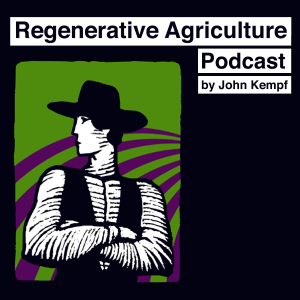We cover a lot of ground in this episode but some of the key takes are:
A key difference between visualizing non-spatial data and spatial data is that non-spatial data gives you the freedom to choose the locations of different objects.
Design is not a process, a way of thinking, and the outcome of not necessarily something visual
We are getting closer to the promise of custom maps for everyone, and we are already seeing personalized maps
Content with Alan Mcconchie here: https://stamen.com/people/alan-mcconchie/
And learn more about Stamen Design here: https://stamen.com/
https://healthsites.io/
Recommended Episode about Cartography
https://mapscaping.com/podcast/communicating-with-maps-the-art-of-cartography/
Consider supporting this podcast on Patreon
https://www.patreon.com/MapScaping?
Or go to MapScaping.com to find out about sponsoring our website
reach out on Twitter https://twitter.com/MapScaping
or LinkedIn https://www.linkedin.com/in/danielodonohue/
More Episodes
Spatial Knowledge Graphs
 2023-05-12
2023-05-12
ChatGPT and Large Language Models
 2023-05-10
2023-05-10
Computer Vision and GeoAI
 2023-04-26
2023-04-26
Designing for Location Privacy
 2023-04-19
2023-04-19
Hyperspectral vs Multispectral
 2023-04-13
2023-04-13
All Of The Places In The World
 2023-04-02
2023-04-02
Planet Scale Tiled Maps Without A Server
 2023-03-22
2023-03-22
Storytelling With Point Clouds
 2023-03-15
2023-03-15
Geospatial Archaeology
 2023-03-08
2023-03-08
Navigating the World of Geospatial Standards
 2023-03-01
2023-03-01
Making Money With Geospatial Content
 2023-02-22
2023-02-22
Distributing Geospatial Data
 2023-02-15
2023-02-15
Geospatial Support for the UN World Food Programme
 2023-02-08
2023-02-08
Aerial Imagery: The State Of The Art
 2023-02-01
2023-02-01
The technology stack and the cultural stack
 2023-01-25
2023-01-25
ChronoCards - Building a Business on ArcGIS Pro
 2023-01-18
2023-01-18
Geospatial Consulting - As A Business And A Career
 2023-01-11
2023-01-11
How Google Calculates Your Location
 2022-12-07
2022-12-07
Reduce and Reverse Tropical Forest Loss With NICFI
 2022-11-30
2022-11-30
Cloud Optimized Point Clouds
 2022-11-15
2022-11-15
Create your
podcast in
minutes
- Full-featured podcast site
- Unlimited storage and bandwidth
- Comprehensive podcast stats
- Distribute to Apple Podcasts, Spotify, and more
- Make money with your podcast
It is Free
You may also like

MinuteEarth


Regenerative Agriculture Podcast


Weird & Dead


Lake Protectors


PlanetGeo: The Geology Podcast


- Privacy Policy
- Cookie Policy
- Terms of Use
- Consent Preferences
- Copyright © 2015-2024 Podbean.com



 iOS
iOS Android
Android